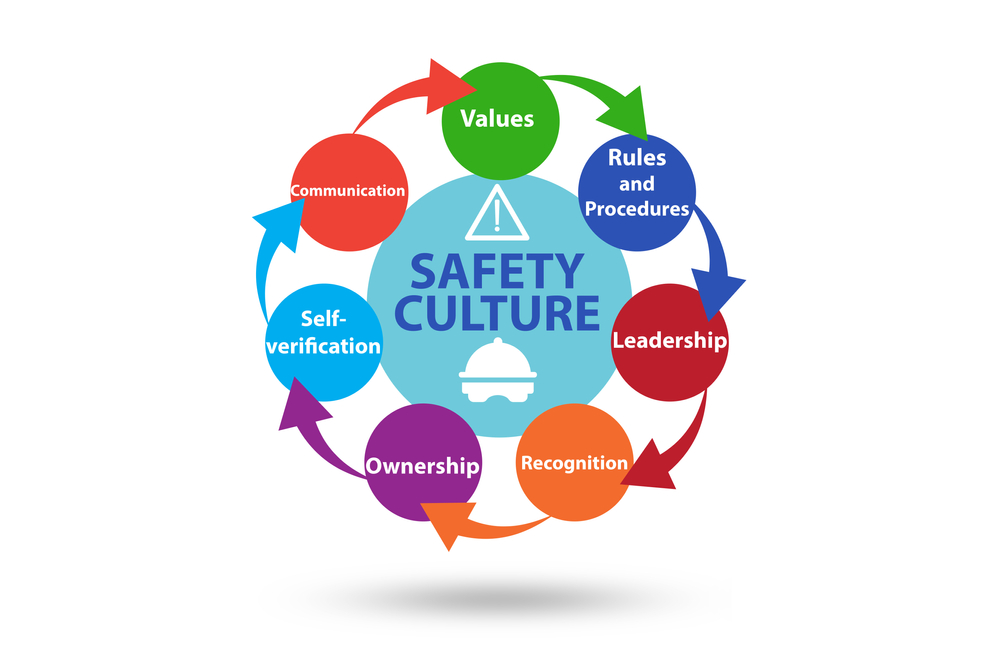How to Promote Safety Culture In Your Workplace

When most business owners or human resource managers think about how to enhance workplace safety, they often think about investing in a safer tool or changing the types of chemicals used within their given industry. In some cases, training may be offered to the workforce on how to avoid accidents, or perhaps the company may hang signs in strategic areas to alert workers to different hazards.
While these individual actions can certainly promote the safety and wellbeing of your employees, they are but a part of a more holistic and comprehensive focus on safety culture within the workplace. Safety culture can be defined as the collection of the beliefs, perceptions and values that employees share in relation to risks within an organization, such as a workplace or community.
In the worst of cases, a company with a low or non-existent safety culture will have employees who ignore risks, disregard safety protocols, and regularly pay no heed to the policies and protocols that are implemented to reduce the probability of workplace accidents and illnesses. Furthermore, companies with an unhealthy safety culture will also have a limited focus on worker wellbeing, with most workers only looking to earn a paycheck without caring about discovering ways to integrate their work life into a wider wellbeing strategy.
On the flip side, companies that invest time, energy, and resources into developing a healthy and flourishing safety culture, will have a workforce who understands the potential workplace hazards and a series of values, attitudes, and behaviors that reflect a concern for their safety and the safety of others. Of course, companies with a positive workplace safety culture will also save an enormous amount of money on workers compensation payments, and other economic losses that occur due to lost time due to workplace accidents and injuries. In fact, one recent study found that the total of workplace injuries in 2019 amounted to 171 billion U.S. dollars, or almost $1,100 per worker.
Doing the necessary work to improve your workplace safety culture, then, can save your business money, while also increasing productivity of your workers. A business that focuses on developing a holistic health and safety culture in the workplace will generally have happier workers who are more dedicated to the company’s long-term goals.
Steps to Improve Safety Culture in the Workplace
Obviously, the specific steps to improve the safety culture in the workplace will depend on the type of industry and workplace environment. For example, a construction company will have different safety challenges than an office environment.
Despite these differences, however, there are a few common elements to all safety cultures in the workplace, which include:
- Define Responsibilities
Delegating responsibilities is extremely important so that everyone knows their specific roles and tasks in mitigating potential hazards in the workplace. - Create an Organizational Vision for Safety
Beyond individual responsibilities, a wider organizational vision can create a sense of bonding and common purpose among workers. When people understand that their actions can either hurt or protect other workers, there is generally a healthier workplace safety culture. This can be accomplished through a Workplace Safety Committee. - Open and Fluid Communication
All safety cultures will rely on open and fluid communication so that all levels of employees can feel empowered to voice their concerns, ask for help or support when it is needed, and point out safety flaws when noticed. - Create a Transparent Reporting System
Workers need to feel supported when reporting an accident, illness, or other safety-related incident. If they think that reporting a safety incident may threaten their employment, safety protocols will generally fall by the wayside.
A proper, hands-on training for all safety-related elements of the workplace environment is also an important step in creating a thriving safety culture. Check out this resource provided by the Occupational Safety and Health Administration (OSHA) on strategies to promote safety culture for all of your workers.
Make Safety A Team Culture Fit With Work-Fit
Lastly, your business may also consider hiring a third-party team to help you build a positive safety culture for your workers. Work-Fit is a leading onsite and telehealth injury prevention and wellness management service for your workforce with years of experience in helping businesses from all different industries to create and implement holistic injury prevention programs and wellness management programs.
We have a team of exercise physiologists, health and fitness professionals and athletic trainers that are all trained in the top safety standards for dozens of industries.
No matter what industry you work in, we can help you protect your workers and your bottom line from all different sorts of diseases, illnesses, and accidents. Contact Work-Fit today to see how we can help your company develop a thriving safety culture for your company!



